Exposure Assessment of Wireless Power Transfer Systems
Problem Description
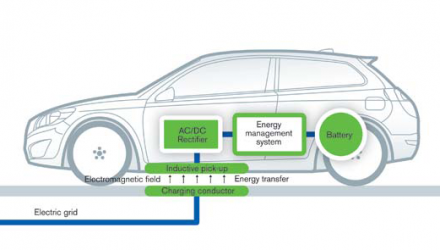
Schematic view of a wireless car charger.
Wireless power transfer (WPT) is an emerging technology and is expected to become ubiquitous in the human environment for charging electronic or household appliances, medical implants or, even, cars. Therefore, it is important for all WPT systems to operate in compliance with the guidelines that regulate exposure of the general public and professionals to electromagnetic fields.
Wireless power transfer systems use various approaches for their operation. They can be grouped according to the distance of the power receiving device from the power source. When the distance is small, wireless chargers may operate in the frequency range of 20 kHz up to 13.56 MHz. In order to transmit power to larger distances or to energy harversters (e.g., RFID tags) radiofrequencies are used. In the lower frequency range power is transferred with capacitive or inductive coupling. The latter mechanism is used more often in commercially available systems, implemented in the form of resonant coils.
Standards Addressed
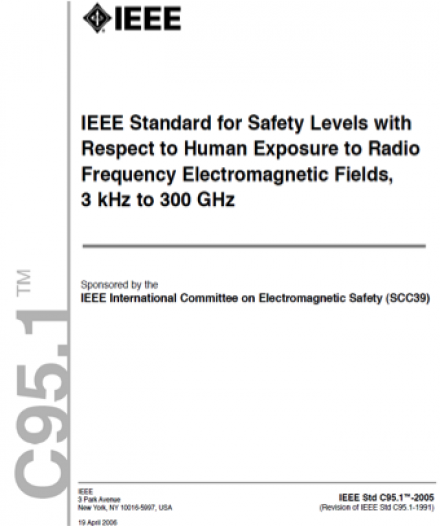
The IEEE standard C95.1 for safety levels with respect to human exposure to radio frequency electromagnetic fields.
Currently, there are no standardized procedures for assessing the exposure of WPT systems and demonstrating compliance with the exposure guidelines. The most widely adopted documents on restricting human exposure from electromagnetic fields are issued by the International Commission on Nonionizing Radiation Protection (ICNIRP 1998, ICNIRP 2010) and the Institute of Electrical and Electronics Engineers (IEEE C95.1). They include basic restrictions in order to prevent tissue stimulation in the lower frequency range (up to 5 or 10 MHz) and excessive tissue heating for frequencies above 100 kHz. Since many WPT systems operate at frequencies between 100 kHz and 10 MHz both sets of basic restrictions must simultaneously apply.
Methodology
1. Single-step procedure
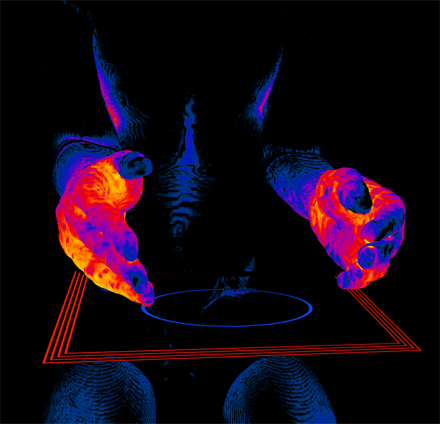
Electromagnetic exposure induced in hands close to coil for wireless power transfer.
In the single-step approach typical exposure scenarios are used. The Virtual Population (ViP) human models are placed next to the sources with postures obtained with the POSER tool, so as to reflect realistic exposure conditions for the intended use of the WPT system. Worst-case analysis (e.g., leaning upon or touching the system) is also possible in a straightforward manner. The induced fields in the computational phantoms are thereafter extracted and analyzed with respect to basic restrictions. In order to carry out this type of analysis it is necessary to use a full-wave technique, like finite-difference-time-domain (FDTD), implemented by the P-EM-FDTD solver, which takes into account the tissue distribution inside the human body and the loading it causes to the power source.
If the frequency of the WPT system is very low, then the High Performance Computing (HPC) framework is the solution to simulation acceleration. In this case, however, it is worth checking whether the quasistatic conditions are fulfilled, so as to use the respective low frequency solver (P-EM-QS), although the interaction of the body to the source is not considered then.
2. Two-step procedure
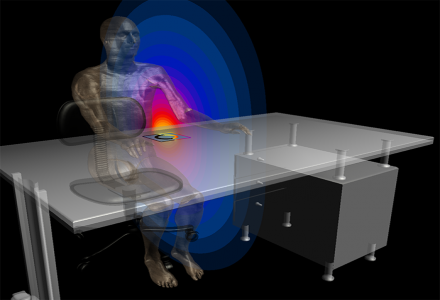
Magnetic fields and induced exposure of a person sitting near a wireless power charger.
The two-step approach also neglects the effects of the human body on the source. Nevertheless, it allows for reduction in the computational times. The electromagnetic field generated by the WPT system (calculated either analytically or numerically in the first step of the process) is used to excite the HUYGENS source, which, in turn, gives an assessment of the dosimetric quantities inside the ViP models. In this way, it is not necessary to simulate the resonant structures in the time domain.
3. Validation of source modeling
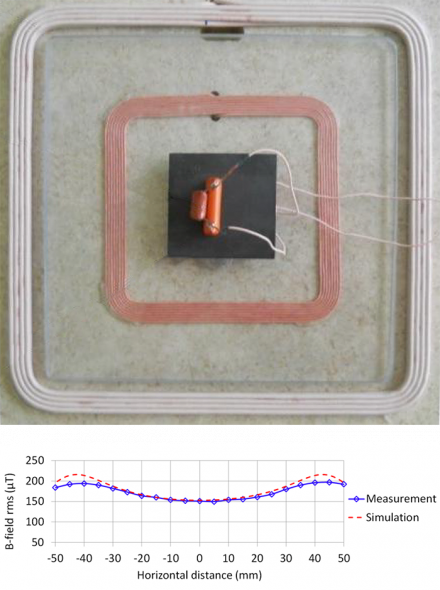
A wireless charging configuration (top) and a comparison of measured and simulated fields.
It is worth mentioning here, that for both procedures (single- and two-step) it is important to validate that the numerical model of the WPT system source corresponds to the physical device. This can be achieved by experimental measurements in air and close to the source, as well as in liquid-filled phantoms. All necessary validation equipment can be obtained either from us or from our sister company SPEAG (Schmid and Partner Engineering AG).
Using the robot-based DASY5 the magnetic fields generated by the actual WPT system can be measured in air with the help of the free-space probe H3DV8 and compared with the Sim4Life calculated results of the source model. A similar comparison can be performed for the specific absorption rate (SAR) distribution inside a flat phantom made of glass fiber reinforced vinylester shell. The phantom can be filled with the high conductivity liquid (HCL) produced by ZMT, which is employed also in medical implant safety assessment inside MRI scanners. The SAR measurements inside the liquid are conducted with a calibrated probe ET3DV6 mounted on the DASY5 system from SPEAG with the WPT system placed at various distances from the outer surface of the flat phantom. The validation of the source model is again achieved by comparing measured and Sim4Life computed SAR distributions, e.g., adopting the procedure described in the draft standard IEC/IEEE 62704-1.
4. Optimization of power transfer
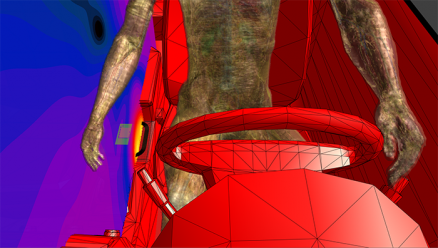
Complex configurations and associated assessment and optimization can be performed by simulation in Sim4Life.
An optimal WPT system allows for the maximum transfer of power between the source and the device charging at the lowest human exposure. Both for short- and mid-range systems it is possible to use generic coil models and calculate the coupling efficiency between resonant coils (the most popular technology until now in WPT) as a function of frequency and distance. With the ViP models placed in realistic scenarios within the magnetic field both induced electric field and SAR can be calculated for each coil setup. The WPT system designer can then choose the configuration which results in the highest power transfer complying with exposure guidelines. In this way both time-to-market and costs can be reduced during the system’s design phase.
Procedure Overview
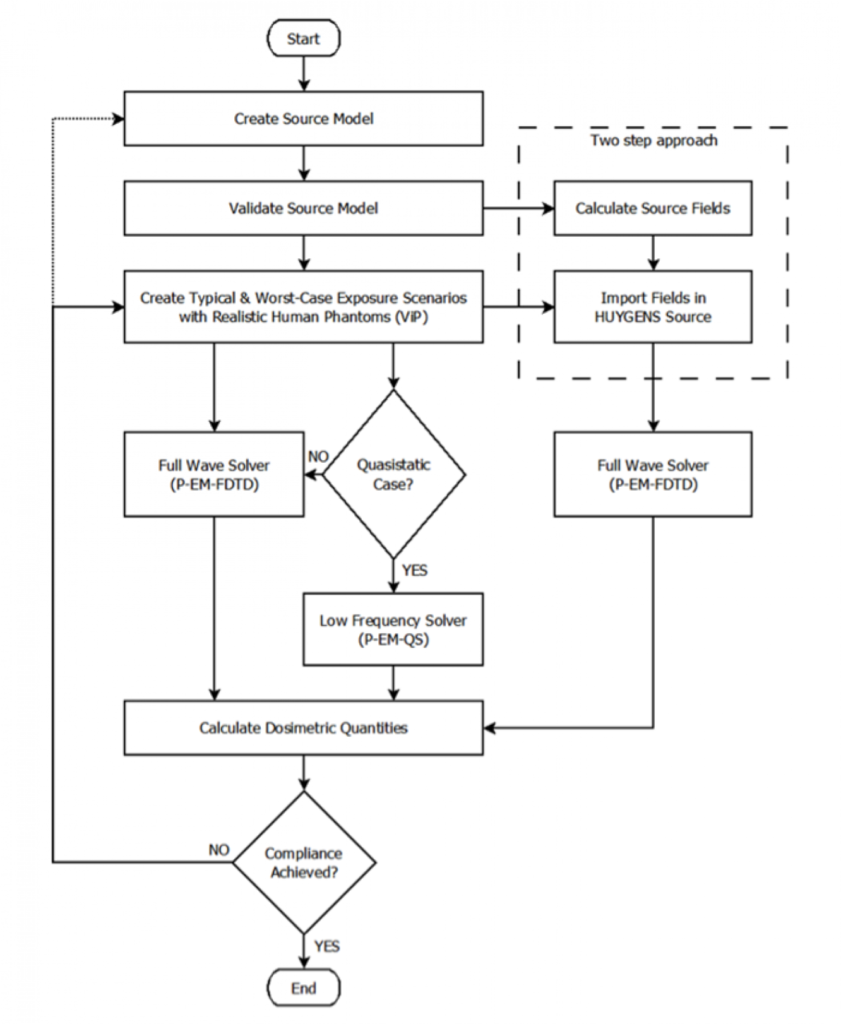
Publications
- A. Christ, M. Douglas, J. Nadakuduti, and N. Kuster, “Assessing human exposure to electromagnetic fields from wireless power transmission systems ,” Proceedings of the IEEE, vol. 101, no. 6, pp. 1482—1493, 2013.
- A. Christ, M. G. Douglas, J. M. Roman, E. B. Cooper, A. P. Sample, B. H. Waters, J. R. Smith, and N. Kuster, “Evaluation of wireless resonant power transfer systems with human electromagnetic exposure limits,” vol. 55, no. 2, pp. 265-274, 2013
- X. L. Chen, A. E. Umenei, D. W. Baarman, N. Chavannes, V. De Santis, J. R. Mosig, and N. Kuster, “Human Exposure to Close-Range Resonant Wireless Power Transfer Systems as a Function of Design Parameters,” IEEE Transactions on Electromagnetic Compatibility, vol. 56, no. 5, pp. 1027-1034, 2014
- X. L. Chen, V. De Santis, and A. E. Umenei, “Theoretical assessment of the maximum obtainable power in wireless power transfer constrained by human body exposure limits in a typical room scenario,” Phys. Med. Biol., vol. 59, no. 13, pp. 3453-3464, 2014
- J. S. Hoa, A. J. Yeha, E. Neofytou, S. Kim, Y. Tanabe, B. Patlolla, R. E. Beygui, and A. S. Y. Poona, “Wireless power transfer to deep-tissue microimplants,” PNAS, vol. 111, no. 22, 7974-7979, 2014
- J. Nadakuduti, M. Douglas, L. Lu, A. Christ, P. Guckian, and N. Kuster, “Compliance Testing Methodology for Wirelss Power Transfer Systems,”, vol. 30, no. 11, pp. 6264-6273, 2015
- UL, “Safety Considerations of Wireless Charger for Electric Vehicles – A Review Paper,”, available for download [Last Accessed,7 September 2015].
